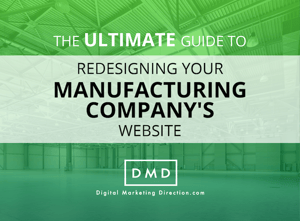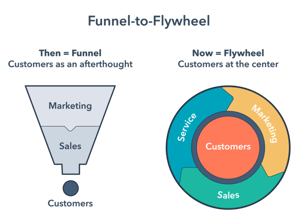If you’re in the manufacturing business, I don’t have to tell you that the COVID-19 pandemic has affected your industry at every level.
What concerns are shared throughout the industrial manufacturing industry during this pandemic?
- Change in business: Eighty percent say that the pandemic will affect their business financially.
- Fluctuations in demand: Forty percent are worried about a decrease in consumer confidence.
- Company layoffs: The manufacturing sector employs 13 million workers, most of whom have to work on-site. Manufacturers are concerned about slowed economic growth and related demand.
 There’s no doubt that COVID-19 has disrupted the way many manufacturers do business. How can you adapt to keep earnings up and retain as many employees as possible?
There’s no doubt that COVID-19 has disrupted the way many manufacturers do business. How can you adapt to keep earnings up and retain as many employees as possible?
Not all companies have experienced the same challenges from the COVID-19 pandemic. One industry that hasn’t struggled during the global health crisis? Online retailers.
While the pandemic has forced more than 250,000 brick and mortar retail sites to close, Amazon, Google and other online retailers are still going strong. Spending on Amazon alone is up 35 percent from the same time last year.
While you may or may not have a retail storefront for your manufacturing business, there is one thing to learn from these recent events:
Now, more than ever, the success of your business is dependent on you reaching your customers online.
How do you incorporate an online presence into your business model in a world shaped by the pandemic? The solution lies in employing omnichannel retail methods to connect online leads to your in-house sales team. Here’s what you need to know to make that happen.
Know Your Audience
 The most important thing you can do to adapt to an omnichannel retail world is to know who your buyer persona is. Who are you trying to reach? You want to be aware of your buyer persona’s expectations, so as to avoid a missing link between what they expect and what you are offering.
The most important thing you can do to adapt to an omnichannel retail world is to know who your buyer persona is. Who are you trying to reach? You want to be aware of your buyer persona’s expectations, so as to avoid a missing link between what they expect and what you are offering.
If there is a disconnect between how your customers want to connect with your company versus how you operate, your customers may go elsewhere. Especially during a pandemic, when each decision is fraught with concerns over what practices are most safe, you need to have a finger on the pulse of what your customers want.
But this isn't an all or nothing issue. You don’t need to move all of your sales online. After all, the internet shouldn’t be the end of relationship selling. Your brand needs to strike a balance that will help you move forward while fostering long-term customer relationships. Bear in mind—this is not a “black or white” situation, but more shades of grey, in reaching customers online and then putting them in touch with your team.
This is the basis of omnichannel retail and marketing for business-to-business (B2B) manufacturers: routing online lead submissions to your sales representatives. This gives you the opportunity to build lasting relationships with your customers through a detailed, targeted buying journey. You get to appeal to online shoppers without sacrificing customer relationships that help your business thrive.
According to Shopify, “[a]n omnichannel retail strategy is an approach to sales and marketing that provides customers with a fully integrated shopping experience by uniting user experiences from brick and mortar to mobile browsing and everything in between.” It simply gives your prospects and customers more ways to connect with your company.
How does this benefit your manufacturing business? You’re creating lasting relationships. Besides consumers’ love for convenience, they probably don’t have a relationship with online retailers like Amazon. You don’t want to move all of your sales online, creating a purely transactional experience for your customers; they likely crave a more fulfilling experience, which you can provide when you pair them up with your experts who can answer their questions and help solve their problems.
Many customers still want a buying experience and a relationship with their supplier. In fact, 51% of enterprises with an optimal customer experience have highly successful content marketing. What that looks like for your company may vary, based on whether your product is more of a commodity, or an industrial product with a complex buying journey. The key here? Content marketing is a big part of what drives these optimal customer experiences to build consumer trust and lasting relationships.
For the latter, you can use customer relationship management (CRM) tools like HubSpot to send online leads to your sales team so they can connect with new, qualified prospects. This means your team has a chance to share their expertise based on different routing criteria, such as product type or territory. The final result? A lasting business relationship.
(Interested in checking out HubSpot's annual Inbound conference, happening September 22 & 23, 2020?
You can grab a free starter pass here and join the sessions virtually!)
Omnichannel Retail and Buyer Personas
I’ve stressed the importance of knowing your buyer personas as you plan your marketing strategies, but what does that mean?
 A buyer persona is a representation of your target customer, the person who buys the products you manufacture. Understanding your target customer is the most important element of your content marketing strategy and needs to be done first. Buyer personas should be well-researched, data-driven and based on the demographics and buying practices of your actual customers, your competitors’ customers and those potential customers you are looking to reach.
A buyer persona is a representation of your target customer, the person who buys the products you manufacture. Understanding your target customer is the most important element of your content marketing strategy and needs to be done first. Buyer personas should be well-researched, data-driven and based on the demographics and buying practices of your actual customers, your competitors’ customers and those potential customers you are looking to reach.
To best solve the problems your ideal customers are facing during the pandemic, you have to understand them and learn more about what they need.
If you’re considering incorporating an omnichannel sales model built on buyer personas to increase your presence online in a virtual economy, you’re not alone. According to the Content Marketing Institute’s Manufacturing Marketing Trends Report for 2020, sixty-six percent of manufacturers planned to implement buyer personas to improve their online presence to capture leads and build relationships.
Your website is the key piece of this puzzle. The planning, messaging, and structure of your site will be the things that pique the interest of your leads. Once you’ve established your company’s online presence, then you can begin to connect your online leads with your sales team. Is your website up to the task?
Evaluate Your Website
The internet has forever altered the way we do business, as has the pandemic, and the manufacturing industry is no exception. To stay competitive, you need to adapt to the way modern buyers are shopping.
Can your website keep up with these shifts? The first step in modernizing your business after creating your buyer personas is to consider—and most likely redesign—your website. If you are moving a portion of your business online, you need to lay a foundation for your future inbound marketing efforts.
 This must begin with your website. You can learn more about the role your website plays, things to consider before you redesign your site, and evolving website maintenance and analytics in our downloadable guide.
This must begin with your website. You can learn more about the role your website plays, things to consider before you redesign your site, and evolving website maintenance and analytics in our downloadable guide.
Websites today have all kinds of tools for analytics and research. They’re designed to appeal to a modern audience in all aspects of design and execution. How can you create a website that will help you grow your business?
- Design and direct your website content to target your buyer personas.
- Create clear conversion paths to capture your visitors’ information and give them a good experience. This information can then be passed along to your sales team for follow-up.
- Use website analytics to understand the habits of the people visiting your website.
- Develop long-form content to help optimize your site for search engine results.
Remember, your website isn’t the be-all and end-all of your online sales approach: it’s an extra tool you’re adding to your toolbox to connect with new leads so you can share with them a fully-integrated buying experience.
Increase Your Social Media Presence
The manufacturing industry lags behind many other industries when it comes to content marketing strategies. However, manufacturers are starting to pay attention to the power of social media marketing.
Just how widespread is this adoption of social media marketing among manufacturers? The Content Marketing Institute’s 2020 Report on Manufacturing Marketing Trends states that seventy percent of manufacturers had increased their use of social media in the last year. Now is the perfect time to reach your target audience in a new way.
 One up-and-coming content avenue to pursue? Video marketing.
One up-and-coming content avenue to pursue? Video marketing.
You may have noticed an increase in the use of video in marketing campaigns on social media—and with good reason. Eighty-two percent of Twitter users view video content on the platform, and 45 percent of consumers watch more than an hour of video on Facebook and YouTube each week. Video marketing is a proven way to share your message in an eye-catching format to capture your audience’s attention.
No matter the kind of content you’re sharing on social media, the key is to keep your buyer personas in mind. What are the most effective ways to reach them?
Here are some things to consider as you prepare your social media marketing strategies:
- Learn how social media works in the manufacturing industry, including how your competitors use it.
- Listen to what your customers have to say, and remember that social media is an extension of your customer service experience.
- Increase efficiency by using tools like live chat with workflow automation.
- Don’t try to tackle every single social media platform at once. Choose two or three to begin, based on your buyer personas’ preferred social media platforms, and use these to target the customers who are most likely to see them.
- Have a clear plan in place, then track and measure your results. Setting goals and benchmarks is the only way to evaluate your progress and analyze data to fine-tune your efforts.
Consider the Flywheel Effect
Maybe you’ve heard about the flywheel effect when it comes to inbound marketing—generating your own momentum to drive lead interest using the momentum of happy customers—but you can take advantage of this model for e-commerce, too.
 What is a flywheel approach to e-commerce? It’s still all about momentum. You put in the initial effort to gain traction and boost sales, and these sales, in turn, continue growing on their own with less effort as time goes on.
What is a flywheel approach to e-commerce? It’s still all about momentum. You put in the initial effort to gain traction and boost sales, and these sales, in turn, continue growing on their own with less effort as time goes on.
How can you put a flywheel model into practice for your manufacturing business? You are appealing to a specific audience, so you want to find just the right ways to reach them.
- Research which methods work in your marketplace.
- Invest in expanding your offerings. Enroll in fast-shipping programs and in-house fulfillment, increase ad spend, pour resources into quality marketing or other elements that are backed up by your research.
- Continue to support your flywheel model as it starts to take off.
- Enjoy return buyers, a growing business, and the benefit of momentum.
Kroger, one of the world’s largest retailers, has been implementing a flywheel model for some time, which is now really taking off thanks to the pandemic. The company has expanded its online presence with multiple shopping options that create buyer allegiance with Kroger. You can shop in three different ways:
- In-person shopping in the store
- Online shopping for delivery
- Online shopping for pick-up
Kroger built out its website’s back-end platform to include digital and in-person business, and then started working to generate momentum. The result? Digital sales grew 92 percent during the spring 2020 business quarter. And while that still only amounted to 7 percent of the business, both in store pickup and delivery grew at unprecedented rates.
If you want to thrive, you need to begin offering more ways to get in touch with your customers and more ways for them to buy your product to match their desires. And right now? The desire for many is to engage online.
The Takeaway
The pronounced shift in 2020 to online commerce means that it’s time to start building a strong online presence for your manufacturing business. And you need a documented, strategic plan to understand your personas and reach your target audience.
How can you use content marketing to drive sales and get an edge on the competition? That’s where we come in. At Digital Marketing Direction, we’re passionate about the impact a digital presence can have for manufacturers like you. We’ll learn the ins and outs of your business and develop strategies to help you shift to omnicommerce while still staying true to who you are.
We have a team of writers, web developers, designers, advertisers, search engine optimization (SEO) experts, and strategists ready to help your manufacturing business stand out and get found online. Ready to take the first step forward? Request a consultation today.
Posted by Jackie Connors

Jackie Connors is the Founder & CEO of Digital Marketing Direction, a HubSpot Solutions Partner agency based in Texas. She provides inbound training, consulting, and content marketing services to mid-market companies.


 Email
Email Facebook
Facebook LinkedIn
LinkedIn